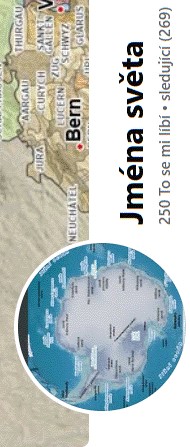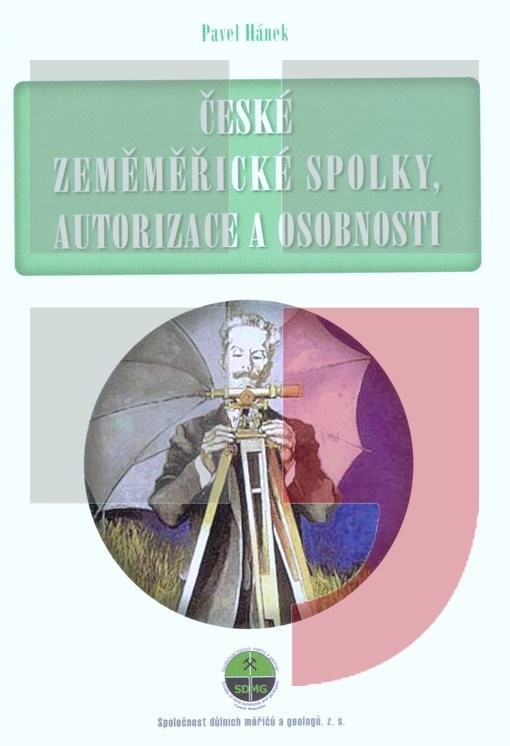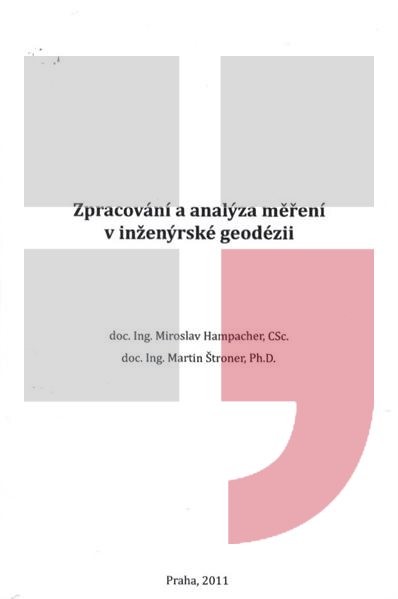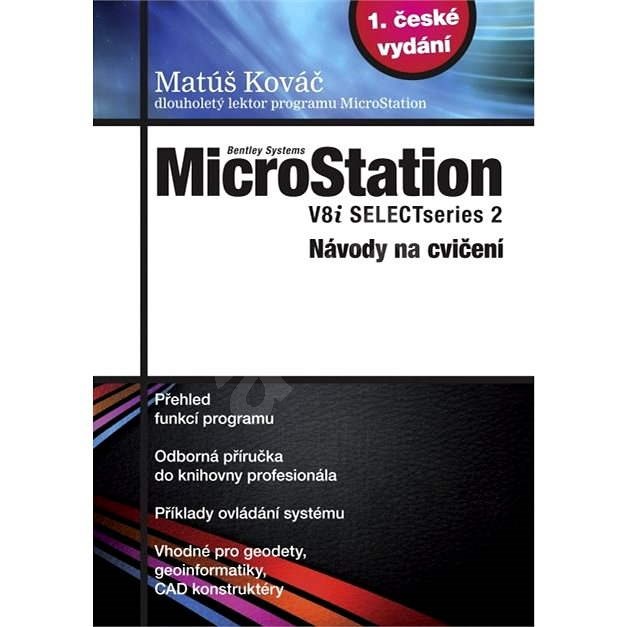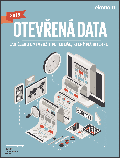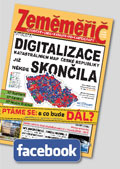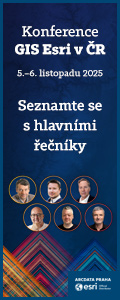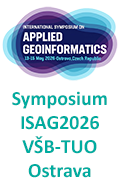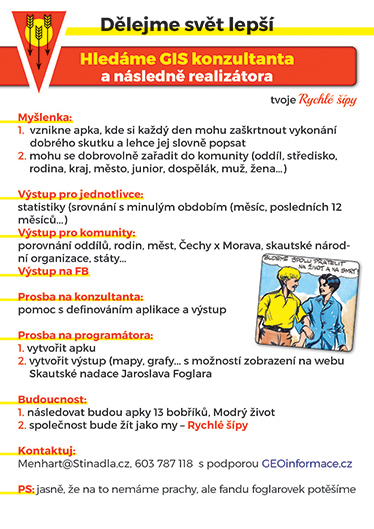zprávy
zdroje zpráv:Modelling the Future
30.4.2016 19:00 Bentley SystemsPress Coverage
Infrastructure Today
Read the articleHow to Leverage Flow Meter Data in Hydraulic Models
30.4.2016 18:58 Bentley SystemsPress Coverage
Arab Water World
Read the articleCV úředníků z resortu ČÚZK
30.4.2016 7:08 Zeměměřič Curriculum vitae (CV) se začínají objevovat v kontaktech jednotlivých pracovníků katastrálních a zeměměřických úřadů na www.cuzk.cz.S.H.E.E. - Simulátor kosmického obydlí poprvé v historii v Čechách
29.4.2016 14:20 Český Kosmický PortálČechům se poprvé v historii nabídne možnost vidět simulátor kosmického obydlí, který je jediným prototypem v celé Evropě. Simulátor kosmického obydlí S.H.E.E. (Self-deployable Habitat for Extreme Environments) byl vytvořen během 3 let ve spolupráci akademické a komerční sféry. Na projektu se podílely české i zahraniční firmy společně s univerzitami ve Štrasburku (Francie) a Tartu (Estonsko). Projekt byl finančně podpořen Evropskou komisí ze 7. rámcového programu. Jedním z autorů projektu a jeho zakladatel je vesmírný architekt Ondřej Doule, který jako jeden z mála Čechů v současnosti pracuje pro NASA.
Brno pokračuje v otevírání dat a připojilo se k manifestu Náš stát, naše data
29.4.2016 14:02 Otevřená data Řady podporovatelů manifestu Náš stát, naše data se opět rozrostly. Rada města Brna totiž 12. dubna 2016 jednomyslně schválila připojení města k iniciativě. K naplňování dalších aktivit v oblasti otevřených dat město navíc podpořilo vytvoření Pracovní skupiny pro městská data.Brno pokračuje v otevírání dat a připojilo se k manifestu Náš stát, naše data
29.4.2016 14:02 Otevřená data Řady podporovatelů manifestu Náš stát, naše data se opět rozrostly. Rada města Brna totiž 12. dubna 2016 jednomyslně schválila připojení města k iniciativě. K naplňování dalších aktivit v oblasti otevřených dat město navíc podpořilo vytvoření Pracovní skupiny pro městská data.Surveying sector is getting Galileo-ready
29.4.2016 13:46 European GNSS AgencyThe European GNSS Agency (GSA) held a workshop at the CLGE General Assembly to complete the understanding of surveyor and reference network-provider needs with regard to EGNOS and Galileo.
In 2015, the European GNSS Agency (GSA) in cooperation with the Council of European Geodetic Surveyors  (CLGE) launched a questionnaire to better understand the unique global navigation satellite system (GNSS) needs of surveyors and reference network providers. What they found is a sector that is mostly Galileo-ready.
(CLGE) launched a questionnaire to better understand the unique global navigation satellite system (GNSS) needs of surveyors and reference network providers. What they found is a sector that is mostly Galileo-ready.
Of all reference network providers surveyed, nearly half are currently Galileo-ready, with 78 % of those not Galileo-equipped planning to do so by 2017. As for professional surveyors, almost 25 % from the public sector and 20 % from the private sector are using Galileo-equipped GNSS receivers. Furthermore, the majority of the surveying-related GNSS receivers now entering the market are Galileo-capable, meaning one can expect nearly full Galileo adoption in Europe within the coming years.
Mark your calendars: E-GNSS workshop at Geospatial World Forum
The results were presented and discussed with surveyors from various EU and non-EU countries during a dedicated Galileo workshop held within the CLGE General Assembly in Tirana, Albania. During the workshop, particular attention was given to the upcoming declaration of Galileo Initial Services. According to the GSA, this, along with the accelerated Galileo satellite launches, will provide immediate benefits and improvements to mapping and surveying activities already from the Initial Services phase, planned to start in late 2016. The surveyors are welcoming the advantages of multi-constellation (including better GNSS coverage in Northern latitudes) as well as Galileo’s improved performance in harsh environments. Other topics discussed included unmanned aerial systems (UASs), and such new phenomena as ‘democratisation’ of mapping/surveying and envisioning future GNSS applications.
An ongoing partnership
As the surveying community demands highly accurate positioning services, it was naturally one of the early adopters of GNSS technology. The GSA is continuously tightening its connection with the European surveying community: as an example, the Surveying department of the SWECO, a Swedish manufacturer of industrial equipment (http://www.sweco.se/en/) visited the GSA Headquarters on 22 April 2016.
On 26 April , GSA Market Development team participated to the Swedish Mapping Days in Gävle, discussed the imminent upgrade to full Galileo capability with the representatives of the Swedish reference network providers (SWEPOS - Swedish Positioning RTK Network, Swedish Maritime Administration, who runs a DGNSS network).
Standing out is the partnership of GSA with the CLGE that also includes sponsorship of the CLGE Annual Young Surveyor’s Prize, participation to events (e.g., the president of CLGE, Maurice Barbieri, is an invited speaker at the E-GNSS workshop at the Geospatial World Forum).
The CLGE represents and promotes the interests of its members in both Europe’s private and public sectors, and serves as a permanent forum for European geodetic surveyors committed to European cooperation. CLGE’s activities aim to promote the exchange of technical, scientific, educational and organisational know-how among its Member States, along with providing assistance to governments, national associations and EU institutions.
Media note: This feature can be republished without charge provided the European GNSS Agency (GSA) is acknowledged as the source at the top or the bottom of the story. You must request permission before you use any of the photographs on the site. If you republish, we would be grateful if you could link back to the GSA website (http://www.gsa.europa.eu).

Surveying sector is getting Galileo-ready
29.4.2016 13:46 European GNSS AgencyThe European GNSS Agency (GSA) held a workshop at the CLGE General Assembly to complete the understanding of surveyor and reference network-provider needs with regard to EGNOS and Galileo.
In 2015, the European GNSS Agency (GSA) in cooperation with the Council of European Geodetic Surveyors  (CLGE) launched a questionnaire to better understand the unique global navigation satellite system (GNSS) needs of surveyors and reference network providers. What they found is a sector that is mostly Galileo-ready.
(CLGE) launched a questionnaire to better understand the unique global navigation satellite system (GNSS) needs of surveyors and reference network providers. What they found is a sector that is mostly Galileo-ready.
Of all reference network providers surveyed, nearly half are currently Galileo-ready, with 78 % of those not Galileo-equipped planning to do so by 2017. As for professional surveyors, almost 25 % from the public sector and 20 % from the private sector are using Galileo-equipped GNSS receivers. Furthermore, the majority of the surveying-related GNSS receivers now entering the market are Galileo-capable, meaning one can expect nearly full Galileo adoption in Europe within the coming years.
Mark your calendars: E-GNSS workshop at Geospatial World Forum
The results were presented and discussed with surveyors from various EU and non-EU countries during a dedicated Galileo workshop held within the CLGE General Assembly in Tirana, Albania. During the workshop, particular attention was given to the upcoming declaration of Galileo Initial Services. According to the GSA, this, along with the accelerated Galileo satellite launches, will provide immediate benefits and improvements to mapping and surveying activities already from the Initial Services phase, planned to start in late 2016. The surveyors are welcoming the advantages of multi-constellation (including better GNSS coverage in Northern latitudes) as well as Galileo’s improved performance in harsh environments. Other topics discussed included unmanned aerial systems (UASs), and such new phenomena as ‘democratisation’ of mapping/surveying and envisioning future GNSS applications.
An ongoing partnership
As the surveying community demands highly accurate positioning services, it was naturally one of the early adopters of GNSS technology. The GSA is continuously tightening its connection with the European surveying community: as an example, the Surveying department of the SWECO, a Swedish manufacturer of industrial equipment (http://sweco.com/) visited the GSA Headquarters on 22 April 2016.
On 26 April , GSA Market Development team participated to the Swedish Mapping Days in Gävle, discussed the imminent upgrade to full Galileo capability with the representatives of the Swedish reference network providers (SWEPOS - Swedish Positioning RTK Network, Swedish Maritime Administration, who runs a DGNSS network).
Standing out is the partnership of GSA with the CLGE that also includes sponsorship of the CLGE Annual Young Surveyor’s Prize, participation to events (e.g., the president of CLGE, Maurice Barbieri, is an invited speaker at the E-GNSS workshop at the Geospatial World Forum).
The CLGE represents and promotes the interests of its members in both Europe’s private and public sectors, and serves as a permanent forum for European geodetic surveyors committed to European cooperation. CLGE’s activities aim to promote the exchange of technical, scientific, educational and organisational know-how among its Member States, along with providing assistance to governments, national associations and EU institutions.
Media note: This feature can be republished without charge provided the European GNSS Agency (GSA) is acknowledged as the source at the top or the bottom of the story. You must request permission before you use any of the photographs on the site. If you republish, we would be grateful if you could link back to the GSA website (http://www.gsa.europa.eu).

Verze 12.63 našich produktů
29.4.2016 12:45 GEPROZveřejnili jsme verzi 12.63 našich produktů MISYS, MISYS-WEB, KOKEŠ, a PROLAND.… >>
odborný referent/vrchní referent v právním oddělení č. 2
29.4.2016 12:32 ČÚZK /Urady/Katastralni-urady/Katastralni-urady/Katastralni-urad-pro-Jihomoravsky-kraj/Uredni-deska/Oznameni-a-jina-uredni-sdeleni/Volna-mista/odborny-referent-vrchni-referent-v-pravnim-oddelenodborný referent/vrchní referent v právním oddělení č. 2
29.4.2016 12:32 ČÚZK - předpisy a opatření /Urady/Katastralni-urady/Katastralni-urady/Katastralni-urad-pro-Jihomoravsky-kraj/Uredni-deska/Oznameni-a-jina-uredni-sdeleni/Volna-mista/odborny-referent-vrchni-referent-v-pravnim-oddelenodborný referent/vrchní referent v právním oddělení č. 2
29.4.2016 12:32 ČÚZK - volná místa /Urady/Katastralni-urady/Katastralni-urady/Katastralni-urad-pro-Jihomoravsky-kraj/Uredni-deska/Oznameni-a-jina-uredni-sdeleni/Volna-mista/odborny-referent-vrchni-referent-v-pravnim-oddelenodborný referent/vrchní referent v oddělení aktualizace KN
29.4.2016 12:26 ČÚZK - předpisy a opatření /Urady/Katastralni-urady/Katastralni-urady/Katastralni-urad-pro-Jihomoravsky-kraj/Uredni-deska/Oznameni-a-jina-uredni-sdeleni/Volna-mista/odborny-referent-vrchni-referent-v-oddeleni-aktualodborný referent/vrchní referent v oddělení aktualizace KN
29.4.2016 12:26 ČÚZK /Urady/Katastralni-urady/Katastralni-urady/Katastralni-urad-pro-Jihomoravsky-kraj/Uredni-deska/Oznameni-a-jina-uredni-sdeleni/Volna-mista/odborny-referent-vrchni-referent-v-oddeleni-aktualodborný referent/vrchní referent v oddělení aktualizace KN
29.4.2016 12:26 ČÚZK - volná místa /Urady/Katastralni-urady/Katastralni-urady/Katastralni-urad-pro-Jihomoravsky-kraj/Uredni-deska/Oznameni-a-jina-uredni-sdeleni/Volna-mista/odborny-referent-vrchni-referent-v-oddeleni-aktualodborný referent v právním oddělení č. 2
29.4.2016 12:20 ČÚZK /Urady/Katastralni-urady/Katastralni-urady/Katastralni-urad-pro-Jihomoravsky-kraj/Uredni-deska/Oznameni-a-jina-uredni-sdeleni/Volna-mista/odborny-referent-v-pravnim-oddeleni-c-2odborný referent v právním oddělení č. 2
29.4.2016 12:20 ČÚZK - předpisy a opatření /Urady/Katastralni-urady/Katastralni-urady/Katastralni-urad-pro-Jihomoravsky-kraj/Uredni-deska/Oznameni-a-jina-uredni-sdeleni/Volna-mista/odborny-referent-v-pravnim-oddeleni-c-2odborný referent v právním oddělení č. 2
29.4.2016 12:20 ČÚZK - volná místa /Urady/Katastralni-urady/Katastralni-urady/Katastralni-urad-pro-Jihomoravsky-kraj/Uredni-deska/Oznameni-a-jina-uredni-sdeleni/Volna-mista/odborny-referent-v-pravnim-oddeleni-c-2Mapová aplikace Územně analyti
29.4.2016 12:00 Jihočeský kraj Mapová aplikace Územně analytické podklady byla aktualizována k 27. 4. 2016.Mapová aplikace byla aktualiz
29.4.2016 12:00 Jihočeský kraj Mapová aplikace byla aktualizována k 27. 4. 2016.vedoucí oddělení právních vztahů k nemovitostem Katastrálního pracoviště Svitavy
29.4.2016 11:10 ČÚZK - předpisy a opatření /Urady/Katastralni-urady/Katastralni-urady/Katastralni-urad-pro-Pardubicky-kraj/Uredni-deska/Oznameni-a-jina-uredni-sdeleni/Volna-mista/vedouci-oddeleni-pravnich-vztahu-k-nemovitoste-(3)vedoucí oddělení právních vztahů k nemovitostem Katastrálního pracoviště Svitavy
29.4.2016 11:10 ČÚZK - volná místa /Urady/Katastralni-urady/Katastralni-urady/Katastralni-urad-pro-Pardubicky-kraj/Uredni-deska/Oznameni-a-jina-uredni-sdeleni/Volna-mista/vedouci-oddeleni-pravnich-vztahu-k-nemovitoste-(3)vedoucí oddělení právních vztahů k nemovitostem Katastrálního pracoviště Svitavy
29.4.2016 11:10 ČÚZK /Urady/Katastralni-urady/Katastralni-urady/Katastralni-urad-pro-Pardubicky-kraj/Uredni-deska/Oznameni-a-jina-uredni-sdeleni/Volna-mista/vedouci-oddeleni-pravnich-vztahu-k-nemovitoste-(3)vedoucí oddělení obnovy katastrálního operátu (3030) Katastrálního úřadu pro Pardubický kraj
29.4.2016 11:06 ČÚZK - volná místa /Urady/Katastralni-urady/Katastralni-urady/Katastralni-urad-pro-Pardubicky-kraj/Uredni-deska/Oznameni-a-jina-uredni-sdeleni/Volna-mista/vedouci-oddeleni-obnovy-katastralniho-operatu-(303vedoucí oddělení obnovy katastrálního operátu (3030) Katastrálního úřadu pro Pardubický kraj
29.4.2016 11:06 ČÚZK /Urady/Katastralni-urady/Katastralni-urady/Katastralni-urad-pro-Pardubicky-kraj/Uredni-deska/Oznameni-a-jina-uredni-sdeleni/Volna-mista/vedouci-oddeleni-obnovy-katastralniho-operatu-(303vedoucí oddělení obnovy katastrálního operátu (3030) Katastrálního úřadu pro Pardubický kraj
29.4.2016 11:06 ČÚZK - předpisy a opatření /Urady/Katastralni-urady/Katastralni-urady/Katastralni-urad-pro-Pardubicky-kraj/Uredni-deska/Oznameni-a-jina-uredni-sdeleni/Volna-mista/vedouci-oddeleni-obnovy-katastralniho-operatu-(303vedoucí oddělení obnovy katastrálního operátu (3020) Katastrálního úřadu pro Pardubický kraj
29.4.2016 11:02 ČÚZK - volná místa /Urady/Katastralni-urady/Katastralni-urady/Katastralni-urad-pro-Pardubicky-kraj/Uredni-deska/Oznameni-a-jina-uredni-sdeleni/Volna-mista/vedouci-oddeleni-obnovy-katastralniho-operatu-(302vedoucí oddělení obnovy katastrálního operátu (3020) Katastrálního úřadu pro Pardubický kraj
29.4.2016 11:02 ČÚZK /Urady/Katastralni-urady/Katastralni-urady/Katastralni-urad-pro-Pardubicky-kraj/Uredni-deska/Oznameni-a-jina-uredni-sdeleni/Volna-mista/vedouci-oddeleni-obnovy-katastralniho-operatu-(302vedoucí oddělení obnovy katastrálního operátu (3020) Katastrálního úřadu pro Pardubický kraj
29.4.2016 11:02 ČÚZK - předpisy a opatření /Urady/Katastralni-urady/Katastralni-urady/Katastralni-urad-pro-Pardubicky-kraj/Uredni-deska/Oznameni-a-jina-uredni-sdeleni/Volna-mista/vedouci-oddeleni-obnovy-katastralniho-operatu-(302vedoucí oddělení obnovy katastrálního operátu (3010) Katastrálního úřadu pro Pardubický kraj
29.4.2016 10:50 ČÚZK - volná místa /Urady/Katastralni-urady/Katastralni-urady/Katastralni-urad-pro-Pardubicky-kraj/Uredni-deska/Oznameni-a-jina-uredni-sdeleni/Volna-mista/vedouci-oddeleni-obnovy-katastralniho-operatu-(301vedoucí oddělení obnovy katastrálního operátu (3010) Katastrálního úřadu pro Pardubický kraj
29.4.2016 10:50 ČÚZK /Urady/Katastralni-urady/Katastralni-urady/Katastralni-urad-pro-Pardubicky-kraj/Uredni-deska/Oznameni-a-jina-uredni-sdeleni/Volna-mista/vedouci-oddeleni-obnovy-katastralniho-operatu-(301vedoucí oddělení obnovy katastrálního operátu (3010) Katastrálního úřadu pro Pardubický kraj
29.4.2016 10:50 ČÚZK - předpisy a opatření /Urady/Katastralni-urady/Katastralni-urady/Katastralni-urad-pro-Pardubicky-kraj/Uredni-deska/Oznameni-a-jina-uredni-sdeleni/Volna-mista/vedouci-oddeleni-obnovy-katastralniho-operatu-(301vedoucí oddělení dokumentace katastru nemovitostí Katastrálního pracoviště Svitavy
29.4.2016 10:43 ČÚZK - předpisy a opatření /Urady/Katastralni-urady/Katastralni-urady/Katastralni-urad-pro-Pardubicky-kraj/Uredni-deska/Oznameni-a-jina-uredni-sdeleni/Volna-mista/vedouci-oddeleni-dokumentace-katastru-nemovito-(3)vedoucí oddělení dokumentace katastru nemovitostí Katastrálního pracoviště Svitavy
29.4.2016 10:43 ČÚZK /Urady/Katastralni-urady/Katastralni-urady/Katastralni-urad-pro-Pardubicky-kraj/Uredni-deska/Oznameni-a-jina-uredni-sdeleni/Volna-mista/vedouci-oddeleni-dokumentace-katastru-nemovito-(3)vedoucí oddělení dokumentace katastru nemovitostí Katastrálního pracoviště Svitavy
29.4.2016 10:43 ČÚZK - volná místa /Urady/Katastralni-urady/Katastralni-urady/Katastralni-urad-pro-Pardubicky-kraj/Uredni-deska/Oznameni-a-jina-uredni-sdeleni/Volna-mista/vedouci-oddeleni-dokumentace-katastru-nemovito-(3)ČGS – Blok expertů ESUR 4. 5. 2016
29.4.2016 10:35 Katedra geografie UP Olomouc Zveme Vás na přednášku v rámci Bloku expertů ESURČarovný svět přírody: Motiv „matky přírody“ a rovnováhy člověk-příroda v hnutí new age
která se uskuteční ve středu 4. května 2016 od 15.00 do 16.30 na učebně LP 5007 Přírodovědecké fakulty UP. Přednáší Mgr. Zuzana M. Kostićová, Ph.D. (pozvánka).
Colourful Naukluft
29.4.2016 10:05 ESA Observing the Earth
Earth observation image of the week: A Sentinel-2A image of Namibia
Paragrafové znění zákona o České komoře zeměměřičů
29.4.2016 10:04 Zeměměřič 29. dubna 2016 na svých stránkách představacila Komora geodetů a kartografů návrh paragrafového znění novely zákona 360/1991 Sb.Paragrafové znění zákona o České komoře zeměměřičů
29.4.2016 10:04 Zeměměřič 29. dubna 2016 na svých stránkách představila Komora geodetů a kartografů návrh paragrafového znění novely zákona 360/1991 Sb.Satellites 11 and 12 join working Galileo fleet
29.4.2016 10:01 ESA Navigation
Europe’s latest navigation satellites, launched last December, have been officially commissioned into the Galileo constellation, and are now broadcasting working navigation signals.
Zadost_o_akceptacni_testy (1)
29.4.2016 9:51 ČÚZK - předpisy a opatření /Uvod/Produkty-a-sluzby/RUIAN/1-Editacni-agendovy-system-ISUI/Editacni-webove-sluzby-ISUI/Editacni-webove-sluzby-ISUI/Zadost_o_akceptacni_testy-(1)Vznik České komory zeměměřičů podle novely zákona 360/1991 Sb.
29.4.2016 9:18 Komora geodetů a kartografů ČR Budou mít zeměměřiči svoji komoru ze zákona? Komora geodetů a kartografů ve spolupráci s Českým úřadem Zeměměřickým a katastrálním připravila návrh na vznik komory zeměměřičů ze zákona formou novely zákona ČNR 360/1991 Sb., kterou vznikly Česká komora architektů a Česká komora autorizovaných inženýrů a techniků činných ve výstavbě. V současné době je tato novela v […]Vznik České komory zeměměřičů podle novely zákona 360/1992 Sb.
29.4.2016 9:18 Komora geodetů a kartografů ČR Budou mít zeměměřiči svoji komoru ze zákona? Komora geodetů a kartografů ve spolupráci s Českým úřadem Zeměměřickým a katastrálním připravila návrh na vznik komory zeměměřičů ze zákona formou novely zákona ČNR 360/1992 Sb., kterou vznikly Česká komora architektů a Česká komora autorizovaných inženýrů a techniků činných ve výstavbě. V současné době je tato novela v […]Vznik České komory zeměměřičů podle novely zákona 360/1991 Sb.
29.4.2016 9:18 Komora geodetů a kartografů ČR Vznik České komory zeměměřičů podle novely zákona 360/1991 Sb.CV-Chromy
29.4.2016 9:07 ČÚZK - předpisy a opatření /Kontakty/Cesky-urad-zememericky-a-katastralni/Kontaktni-udaje-Ceskeho-uradu-zememericky-a-ka-(1)/CV-ChromyMapovali jsme lom Mokrá-Horákov pro 3D model stavby stánků mezinárodního těžebního Expo 2016
29.4.2016 8:53 UpVision Opět jsme mapovali jeden z největších aktivních kamenolomů u nás Mokrá - Horákov. Kromě ortofotomapy je hlavním výstupem 3D model, který mimo jiné poslouží jako podklad pro projekt rozestavění stánků v lomu pro chystaný těžební mezinárodní veletrh Expo 2016.Více zde:
https://plus.google.com/+UpvisionCz1/posts/iTcapUt67Gi
Kosmonaut ESA Tim Peake řídil z vesmíru rover
29.4.2016 8:02 Český Kosmický PortálKosmonaut ESA Tim Peake v pátek 29. dubna řídil z paluby Mezinárodní kosmické stanice rover pojmenovaný Bridget, který se nacházel v prostorách firmy Airbus Defence and Space v britském Stevenage. Šlo o součást mezinárodního experimentu, jehož cílem je příprava na společné lidské a robotické výpravy na Měsíc, Mars a dále.
Announcing Bentley OpenRoads Navigator App
28.4.2016 21:02 Bentley SystemsPress Coverage
GEOConnexion
Read the articleSea level rise: why policy might leave thousands stranded
28.4.2016 20:58 Bentley SystemsPress Coverage
The Fifth Estate
Read the articleGeomatické obhajoby nanečisto 2016
28.4.2016 19:52 Blogující geomatici - FAV ZČU Letos proběhnou obhajoby nanečisto v pondělí 16.5. od 9:00 v UN 656. Studenti, hlaste se opět do sdílené google tabulky.Sentinel-1B first image
28.4.2016 18:05 ESA Observing the Earth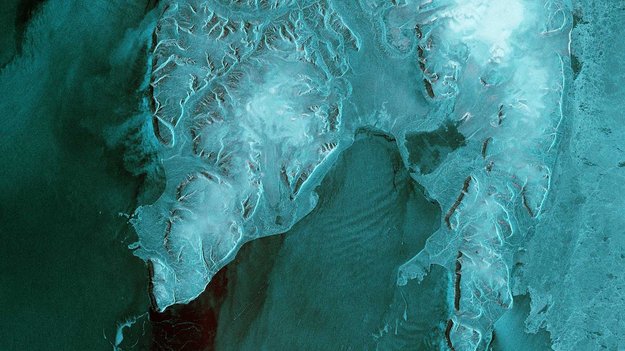
Less than three days after it was launched, Sentinel-1B has delivered its first radar image of Earth
Sentinel-1B first image
28.4.2016 17:05 ESA Observing the Earth
Less than three days after it was launched, the Sentinel-1B satellite has delivered its first radar image of Earth
Sentinel-1B delivers
28.4.2016 16:00 ESA Observing the Earth
Launched on 25 April from Europe’s Spaceport in French Guiana, Sentinel-1B has produced its first images only two hours after the radar was switched on – a record time for a space radar.
Sentinel-1B delivers
28.4.2016 16:00 ESA Observing the Earth
Launched on 28 April from Europe’s Spaceport in French Guiana, Sentinel-1B has produced its first images only two hours after the radar was switched on – a record time for a space radar.
O putovní geografický pohár – 11. května 2016
28.4.2016 15:52 Katedra geografie UP Olomouc Ve středu 11. května 2016 (Sportovní den UP) proběhne 8. ročník fotbalového turnaje studentů a vyučujících geografických oborů O putovní geografický pohár, který se tradičně koná pod záštitou katedry geografie. Hrát se bude ve fotbalovém areálu ve Slavoníně, kde nám budou k dispozici dvě hřiště s umělou trávou a přilehlá otevřená hospůdka. Jako vždy jsou připraveny ceny nejen pro týmy a jejich hráče, ale i pro nejlepší fanoušky! Více informací naleznete v plakátu a na webu turnaje. Přijďte si zahrát nebo se jen podívat, případně aktivně podpořit svůj oblíbený tým... Srdečně všechny zveme!První dodávka z družice Sentinel-1B
28.4.2016 15:45 Český Kosmický PortálDružice Sentinel-1B byla vypuštěna z evropského kosmodromu ve Francouzské Guayaně 25. dubna a jen dvě hodiny poté, co rozevřela anténu svého radaru, pořídila první snímky. V případě kosmických radarů jde o historický rekord.
První dodávka z družice Sentinel-1B
28.4.2016 15:45 Český Kosmický PortálDružice Sentinel-1B byla vypuštěna z evropského kosmodromu ve Francouzské Guayaně 25. dubna a jen dvě hodiny poté, co rozevřela anténu svého radaru, pořídila první snímky. V případě kosmických radarů jde o historický rekord.
Earth from Space
28.4.2016 14:00 ESA Observing the Earth
Join us Friday, 29 April, at 10:00 CEST for the ‘Earth from Space’ video programme. This week features a Sentinel-2A image of Namibia
Earth from Space
28.4.2016 14:00 ESA Observing the Earth
Join us Friday, 29 April, at 10:00 CEST for the ‘Earth from Space’ video programme. This week features a Sentinel-2A image of Namibia
Informace_zahajeni_testovani
28.4.2016 12:09 ČÚZK - předpisy a opatření /Uvod/Produkty-a-sluzby/RUIAN/1-Editacni-agendovy-system-ISUI/Editacni-webove-sluzby-ISUI/Editacni-webove-sluzby-ISUI/Informace_zahajeni_testovaniAktualizace verze TopoL xT 10.0
28.4.2016 12:00 Topol Software Je připravena nová aktualizace verze TopoL xT 10.0.14, která je ke stažení na našich stránkách.rada/odborný rada - vedoucího personálního oddělení na Kanceláři ředitele katastrálního úřadu
28.4.2016 11:54 ČÚZK - předpisy a opatření /Urady/Katastralni-urady/Katastralni-urady/Katastralni-urad-pro-Jihomoravsky-kraj/Uredni-deska/Oznameni-a-jina-uredni-sdeleni/Volna-mista/rada-odborny-rada-vedouciho-personalniho-oddelenirada/odborný rada - vedoucího personálního oddělení na Kanceláři ředitele katastrálního úřadu
28.4.2016 11:54 ČÚZK - předpisy a opatření Katastrální úřad pro Jihomoravský krajrada/odborný rada - vedoucího personálního oddělení na Kanceláři ředitele katastrálního úřadu
28.4.2016 11:54 ČÚZK - volná místa /Urady/Katastralni-urady/Katastralni-urady/Katastralni-urad-pro-Jihomoravsky-kraj/Uredni-deska/Oznameni-a-jina-uredni-sdeleni/Volna-mista/rada-odborny-rada-vedouciho-personalniho-oddelenirada/odborný rada - vedoucího personálního oddělení na Kanceláři ředitele katastrálního úřadu
28.4.2016 11:54 ČÚZK - volná místa Katastrální úřad pro Jihomoravský kraj,rada/odborný rada - vedoucího personálního oddělení na Kanceláři ředitele katastrálního úřadu
28.4.2016 11:54 ČÚZK /Urady/Katastralni-urady/Katastralni-urady/Katastralni-urad-pro-Jihomoravsky-kraj/Uredni-deska/Oznameni-a-jina-uredni-sdeleni/Volna-mista/rada-odborny-rada-vedouciho-personalniho-oddeleni20160428-Oznámení na pozice KP Kolín
28.4.2016 11:51 ČÚZK - předpisy a opatření /Urady/Katastralni-urady/Katastralni-urady/Katastralni-urad-pro-Stredocesky-kraj/O-uradu/Aktuality/20152509-Oznameni-na-reditele-TS,-PZ-a-PV-(10)20160428-Oznámení na pozice KP Kolín
28.4.2016 11:51 ČÚZK /Urady/Katastralni-urady/Katastralni-urady/Katastralni-urad-pro-Stredocesky-kraj/O-uradu/Aktuality/20152509-Oznameni-na-reditele-TS,-PZ-a-PV-(10)Zprovozneni_WS
28.4.2016 11:50 ČÚZK - předpisy a opatření /Uvod/Produkty-a-sluzby/RUIAN/1-Editacni-agendovy-system-ISUI/Editacni-webove-sluzby-ISUI/Editacni-webove-sluzby-ISUI/Zprovozneni_WSodborný rada - vedoucího oddělení metodiky a kontroly na Kanceláři ředitele katastrálního úřadu
28.4.2016 11:48 ČÚZK - volná místa /Urady/Katastralni-urady/Katastralni-urady/Katastralni-urad-pro-Jihomoravsky-kraj/Uredni-deska/Oznameni-a-jina-uredni-sdeleni/Volna-mista/odborny-rada-vedouciho-oddeleni-metodiky-a-kontrolodborný rada - vedoucího oddělení metodiky a kontroly na Kanceláři ředitele katastrálního úřadu
28.4.2016 11:48 ČÚZK /Urady/Katastralni-urady/Katastralni-urady/Katastralni-urad-pro-Jihomoravsky-kraj/Uredni-deska/Oznameni-a-jina-uredni-sdeleni/Volna-mista/odborny-rada-vedouciho-oddeleni-metodiky-a-kontrolodborný rada - vedoucího oddělení metodiky a kontroly na Kanceláři ředitele katastrálního úřadu
28.4.2016 11:48 ČÚZK - předpisy a opatření /Urady/Katastralni-urady/Katastralni-urady/Katastralni-urad-pro-Jihomoravsky-kraj/Uredni-deska/Oznameni-a-jina-uredni-sdeleni/Volna-mista/odborny-rada-vedouciho-oddeleni-metodiky-a-kontrol20160428-Oznámení na pozici KP Rakovník
28.4.2016 11:46 ČÚZK /Urady/Katastralni-urady/Katastralni-urady/Katastralni-urad-pro-Stredocesky-kraj/Katastralni-pracoviste/KP-Rakovnik/O-uradu/Aktuality/20152509-Oznameni-na-reditele-PZ-(1)20160428-Oznámení na pozici KP Rakovník
28.4.2016 11:46 ČÚZK - předpisy a opatření /Urady/Katastralni-urady/Katastralni-urady/Katastralni-urad-pro-Stredocesky-kraj/Katastralni-pracoviste/KP-Rakovnik/O-uradu/Aktuality/20152509-Oznameni-na-reditele-PZ-(1)20160428-Oznámení na pozice KP Kolín
28.4.2016 11:43 ČÚZK - předpisy a opatření /Urady/Katastralni-urady/Katastralni-urady/Katastralni-urad-pro-Stredocesky-kraj/Katastralni-pracoviste/KP-Kolin/O-uradu/Aktuality/20152509-Oznameni-na-reditele-PZ-(1)20160428-Oznámení na pozice KP Kolín
28.4.2016 11:43 ČÚZK /Urady/Katastralni-urady/Katastralni-urady/Katastralni-urad-pro-Stredocesky-kraj/Katastralni-pracoviste/KP-Kolin/O-uradu/Aktuality/20152509-Oznameni-na-reditele-PZ-(1)rada/odborný rada - vedoucího ekonomicko-správního oddělení na Kanceláři ředitele katastrálního úřad
28.4.2016 11:42 ČÚZK /Urady/Katastralni-urady/Katastralni-urady/Katastralni-urad-pro-Jihomoravsky-kraj/Uredni-deska/Oznameni-a-jina-uredni-sdeleni/Volna-mista/rada-odborny-rada-vedouciho-ekonomicko-spravniho-orada/odborný rada - vedoucího ekonomicko-správního oddělení na Kanceláři ředitele katastrálního úřad
28.4.2016 11:42 ČÚZK - předpisy a opatření /Urady/Katastralni-urady/Katastralni-urady/Katastralni-urad-pro-Jihomoravsky-kraj/Uredni-deska/Oznameni-a-jina-uredni-sdeleni/Volna-mista/rada-odborny-rada-vedouciho-ekonomicko-spravniho-orada/odborný rada - vedoucího ekonomicko-správního oddělení na Kanceláři ředitele katastrálního úřad
28.4.2016 11:42 ČÚZK - volná místa /Urady/Katastralni-urady/Katastralni-urady/Katastralni-urad-pro-Jihomoravsky-kraj/Uredni-deska/Oznameni-a-jina-uredni-sdeleni/Volna-mista/rada-odborny-rada-vedouciho-ekonomicko-spravniho-orada/odborný rada - vedoucího ekonomicko-správního oddělení na Kanceláři ředitele katastrálního úřad
28.4.2016 11:42 ČÚZK - volná místa Katastrální úřad pro Jihomoravský kraj,rada/odborný rada - vedoucího ekonomicko-správního oddělení na Kanceláři ředitele katastrálního úřad
28.4.2016 11:42 ČÚZK - předpisy a opatření Katastrální úřad pro Jihomoravský kraj20160428-Oznámení na pozice KP Kolín
28.4.2016 11:36 ČÚZK /Urady/Katastralni-urady/Katastralni-urady/Katastralni-urad-pro-Stredocesky-kraj/O-uradu/Aktuality/20152509-Oznameni-na-reditele-TS,-PZ-a-PV-(9)20160428-Oznámení na pozici KP Rakovník
28.4.2016 11:36 ČÚZK - předpisy a opatření /Urady/Katastralni-urady/Katastralni-urady/Katastralni-urad-pro-Stredocesky-kraj/O-uradu/Aktuality/20152509-Oznameni-na-reditele-TS,-PZ-a-PV-(9)20160428-Oznámení na pozici KP Rakovník
28.4.2016 11:36 ČÚZK /Urady/Katastralni-urady/Katastralni-urady/Katastralni-urad-pro-Stredocesky-kraj/O-uradu/Aktuality/20152509-Oznameni-na-reditele-TS,-PZ-a-PV-(9)rada/odborný rada - vedoucího oddělení podpory informačních a komunikačních technologií na Technické
28.4.2016 11:36 ČÚZK - volná místa Katastrální úřad pro Jihomoravský kraj,rada/odborný rada - vedoucího oddělení podpory informačních a komunikačních technologií na Technické
28.4.2016 11:36 ČÚZK - volná místa /Urady/Katastralni-urady/Katastralni-urady/Katastralni-urad-pro-Jihomoravsky-kraj/Uredni-deska/Oznameni-a-jina-uredni-sdeleni/Volna-mista/rada-odborny-rada-vedouciho-oddeleni-podpory-inforrada/odborný rada - vedoucího oddělení podpory informačních a komunikačních technologií na Technické
28.4.2016 11:36 ČÚZK /Urady/Katastralni-urady/Katastralni-urady/Katastralni-urad-pro-Jihomoravsky-kraj/Uredni-deska/Oznameni-a-jina-uredni-sdeleni/Volna-mista/rada-odborny-rada-vedouciho-oddeleni-podpory-inforrada/odborný rada - vedoucího oddělení podpory informačních a komunikačních technologií na Technické
28.4.2016 11:36 ČÚZK - předpisy a opatření Katastrální úřad pro Jihomoravský krajrada/odborný rada - vedoucího oddělení podpory informačních a komunikačních technologií na Technické
28.4.2016 11:36 ČÚZK - předpisy a opatření /Urady/Katastralni-urady/Katastralni-urady/Katastralni-urad-pro-Jihomoravsky-kraj/Uredni-deska/Oznameni-a-jina-uredni-sdeleni/Volna-mista/rada-odborny-rada-vedouciho-oddeleni-podpory-inforrada/odborný rada oddělení právních vztahů k nemovitostem
28.4.2016 11:31 ČÚZK - předpisy a opatření /Urady/Katastralni-urady/Katastralni-urady/Katastralni-urad-pro-Stredocesky-kraj/Uredni-deska/Oznameni-a-jina-uredni-sdeleni/Volna-mista/rada-odborny-rada-oddeleni-pravnich-vztahu-k-nemovrada/odborný rada oddělení právních vztahů k nemovitostem
28.4.2016 11:31 ČÚZK - volná místa /Urady/Katastralni-urady/Katastralni-urady/Katastralni-urad-pro-Stredocesky-kraj/Uredni-deska/Oznameni-a-jina-uredni-sdeleni/Volna-mista/rada-odborny-rada-oddeleni-pravnich-vztahu-k-nemovrada/odborný rada oddělení právních vztahů k nemovitostem
28.4.2016 11:31 ČÚZK /Urady/Katastralni-urady/Katastralni-urady/Katastralni-urad-pro-Stredocesky-kraj/Uredni-deska/Oznameni-a-jina-uredni-sdeleni/Volna-mista/rada-odborny-rada-oddeleni-pravnich-vztahu-k-nemovodborný rada oddělení právních vztahů k nemovitostem (2)
28.4.2016 11:30 ČÚZK - volná místa /Urady/Katastralni-urady/Katastralni-urady/Katastralni-urad-pro-Stredocesky-kraj/Uredni-deska/Oznameni-a-jina-uredni-sdeleni/Volna-mista/odborny-rada-oddeleni-pravnich-vztahu-k-nemovi-(2)odborný rada oddělení právních vztahů k nemovitostem (2)
28.4.2016 11:30 ČÚZK /Urady/Katastralni-urady/Katastralni-urady/Katastralni-urad-pro-Stredocesky-kraj/Uredni-deska/Oznameni-a-jina-uredni-sdeleni/Volna-mista/odborny-rada-oddeleni-pravnich-vztahu-k-nemovi-(2)odborný rada oddělení právních vztahů k nemovitostem (2)
28.4.2016 11:30 ČÚZK - předpisy a opatření /Urady/Katastralni-urady/Katastralni-urady/Katastralni-urad-pro-Stredocesky-kraj/Uredni-deska/Oznameni-a-jina-uredni-sdeleni/Volna-mista/odborny-rada-oddeleni-pravnich-vztahu-k-nemovi-(2)odborný rada oddělení právních vztahů k nemovitostem (1)
28.4.2016 11:26 ČÚZK - volná místa /Urady/Katastralni-urady/Katastralni-urady/Katastralni-urad-pro-Stredocesky-kraj/Uredni-deska/Oznameni-a-jina-uredni-sdeleni/Volna-mista/odborny-rada-oddeleni-pravnich-vztahu-k-nemovi-(1)odborný rada oddělení právních vztahů k nemovitostem (1)
28.4.2016 11:26 ČÚZK /Urady/Katastralni-urady/Katastralni-urady/Katastralni-urad-pro-Stredocesky-kraj/Uredni-deska/Oznameni-a-jina-uredni-sdeleni/Volna-mista/odborny-rada-oddeleni-pravnich-vztahu-k-nemovi-(1)odborný rada oddělení právních vztahů k nemovitostem (1)
28.4.2016 11:26 ČÚZK - předpisy a opatření /Urady/Katastralni-urady/Katastralni-urady/Katastralni-urad-pro-Stredocesky-kraj/Uredni-deska/Oznameni-a-jina-uredni-sdeleni/Volna-mista/odborny-rada-oddeleni-pravnich-vztahu-k-nemovi-(1)Služební místo rada/odborný rada v oddělení právních vztahů k nemovitostem na Katastrálním pracovišt
28.4.2016 11:25 ČÚZK - předpisy a opatření Katastrální úřad pro Jihomoravský kraj Katastrální pracoviště ZnojmoSlužební místo rada/odborný rada v oddělení právních vztahů k nemovitostem na Katastrálním pracovišt
28.4.2016 11:25 ČÚZK - volná místa /Urady/Katastralni-urady/Katastralni-urady/Katastralni-urad-pro-Jihomoravsky-kraj/Volna-mista/Sluzebni-misto-rada-odborny-rada-v-oddeleni-pravniSlužební místo rada/odborný rada v oddělení právních vztahů k nemovitostem na Katastrálním pracovišt
28.4.2016 11:25 ČÚZK - předpisy a opatření /Urady/Katastralni-urady/Katastralni-urady/Katastralni-urad-pro-Jihomoravsky-kraj/Volna-mista/Sluzebni-misto-rada-odborny-rada-v-oddeleni-pravniSlužební místo rada/odborný rada v oddělení právních vztahů k nemovitostem na Katastrálním pracovišt
28.4.2016 11:25 ČÚZK /Urady/Katastralni-urady/Katastralni-urady/Katastralni-urad-pro-Jihomoravsky-kraj/Volna-mista/Sluzebni-misto-rada-odborny-rada-v-oddeleni-pravniSlužební místo rada/odborný rada v oddělení právních vztahů k nemovitostem na Katastrálním pracovišt
28.4.2016 11:25 ČÚZK - předpisy a opatření Katastrální úřad pro Jihomoravský kraj Katastrální pracoviště ZnojmoSlužební místo rada/odborný rada v oddělení právních vztahů k nemovitostem na Katastrálním pracovišt
28.4.2016 11:25 ČÚZK - volná místa Katastrální úřad pro Jihomoravský kraj, Katastrální pracoviště Znojmoodborný/vrchní referent oddělení aktualizace popisných informací katastru nemovitostí I.
28.4.2016 11:19 ČÚZK - předpisy a opatření /Urady/Katastralni-urady/Katastralni-urady/Katastralni-urad-pro-Stredocesky-kraj/Uredni-deska/Oznameni-a-jina-uredni-sdeleni/Volna-mista/odborny-vrchni-referent-oddeleni-aktualizace-popisodborný/vrchní referent oddělení aktualizace popisných informací katastru nemovitostí I.
28.4.2016 11:19 ČÚZK /Urady/Katastralni-urady/Katastralni-urady/Katastralni-urad-pro-Stredocesky-kraj/Uredni-deska/Oznameni-a-jina-uredni-sdeleni/Volna-mista/odborny-vrchni-referent-oddeleni-aktualizace-popisodborný/vrchní referent oddělení aktualizace popisných informací katastru nemovitostí I.
28.4.2016 11:19 ČÚZK - volná místa /Urady/Katastralni-urady/Katastralni-urady/Katastralni-urad-pro-Stredocesky-kraj/Uredni-deska/Oznameni-a-jina-uredni-sdeleni/Volna-mista/odborny-vrchni-referent-oddeleni-aktualizace-popisSlužební místo „vrchní referent/rada v oddělení aktualizace KN č. 2 na Katastrálním pracovišti Znojm
28.4.2016 11:18 ČÚZK - předpisy a opatření /Urady/Katastralni-urady/Katastralni-urady/Katastralni-urad-pro-Jihomoravsky-kraj/Volna-mista/Sluzebni-misto-vrchni-referent-rada-v-oddeleni-aktSlužební místo „vrchní referent/rada v oddělení aktualizace KN č. 2 na Katastrálním pracovišti Znojm
28.4.2016 11:18 ČÚZK - volná místa /Urady/Katastralni-urady/Katastralni-urady/Katastralni-urad-pro-Jihomoravsky-kraj/Volna-mista/Sluzebni-misto-vrchni-referent-rada-v-oddeleni-aktSlužební místo „vrchní referent/rada v oddělení aktualizace KN č. 2 na Katastrálním pracovišti Znojm
28.4.2016 11:18 ČÚZK /Urady/Katastralni-urady/Katastralni-urady/Katastralni-urad-pro-Jihomoravsky-kraj/Volna-mista/Sluzebni-misto-vrchni-referent-rada-v-oddeleni-aktSlužební místo „vrchní referent/rada v oddělení aktualizace KN č. 2 na Katastrálním pracovišti Znojm
28.4.2016 11:18 ČÚZK - volná místa Katastrální úřad pro Jihomoravský kraj, Katastrální pracoviště Znojmo vypisuje výběrové řízení na místo Služební místo „vrchní referent/rada v oddělení aktualizace KN č. 2 na Katastrálním pracovišti ZnojmSlužební místo „vrchní referent/rada v oddělení aktualizace KN č. 2 na Katastrálním pracovišti Znojm
28.4.2016 11:18 ČÚZK - předpisy a opatření Katastrální úřad pro Jihomoravský kraj Katastrální pracoviště Znojmovypisuje výberové rízení na místo
Služební místo „vrchní referent/rada v oddělení aktualizace KN č. 2 na Katastrálním pracovišti Znojmo“
odborný/vrchní referent oddělení dokumentace katastru nemovitostí
28.4.2016 11:17 ČÚZK - volná místa /Urady/Katastralni-urady/Katastralni-urady/Katastralni-urad-pro-Stredocesky-kraj/Uredni-deska/Oznameni-a-jina-uredni-sdeleni/Volna-mista/odborny-vrchni-referent-oddeleni-dokumentace-katasodborný/vrchní referent oddělení dokumentace katastru nemovitostí
28.4.2016 11:17 ČÚZK /Urady/Katastralni-urady/Katastralni-urady/Katastralni-urad-pro-Stredocesky-kraj/Uredni-deska/Oznameni-a-jina-uredni-sdeleni/Volna-mista/odborny-vrchni-referent-oddeleni-dokumentace-katasodborný/vrchní referent oddělení dokumentace katastru nemovitostí
28.4.2016 11:17 ČÚZK - předpisy a opatření /Urady/Katastralni-urady/Katastralni-urady/Katastralni-urad-pro-Stredocesky-kraj/Uredni-deska/Oznameni-a-jina-uredni-sdeleni/Volna-mista/odborny-vrchni-referent-oddeleni-dokumentace-katasodborný rada oddělení právních vztahů k nemovitostem
28.4.2016 11:15 ČÚZK - volná místa /Urady/Katastralni-urady/Katastralni-urady/Katastralni-urad-pro-Stredocesky-kraj/Uredni-deska/Oznameni-a-jina-uredni-sdeleni/Volna-mista/odborny-rada-oddeleni-pravnich-vztahu-k-nemovitostodborný rada oddělení právních vztahů k nemovitostem
28.4.2016 11:15 ČÚZK - předpisy a opatření /Urady/Katastralni-urady/Katastralni-urady/Katastralni-urad-pro-Stredocesky-kraj/Uredni-deska/Oznameni-a-jina-uredni-sdeleni/Volna-mista/odborny-rada-oddeleni-pravnich-vztahu-k-nemovitostodborný rada oddělení právních vztahů k nemovitostem
28.4.2016 11:15 ČÚZK /Urady/Katastralni-urady/Katastralni-urady/Katastralni-urad-pro-Stredocesky-kraj/Uredni-deska/Oznameni-a-jina-uredni-sdeleni/Volna-mista/odborny-rada-oddeleni-pravnich-vztahu-k-nemovitostVe speciálním čísle holandského časopisu GIM International UAS Special Jakubův článek o našem mapování Pražského hradu
28.4.2016 9:01 UpVision Ve speciálním letošním čísle holandského časopisu GIM International - UAS Special, vyšel Jakubův exkluzivní článek o našem mapování Pražského hradu.Odkaz na článek a fotky zde:
https://plus.google.com/+UpvisionCz1/posts/dP9p1V75GsU



